For me, that unforgettable day was way back in 2011, when The Studio (MDR)—one of Los Angeles' first Megaformer studios—opened its doors. I all-too-clearly remember the entire range of emotions I felt during those 50 minutes on the machine, from confidence (“This is like a Pilates reformer, right? I’ve got this!”) to confusion (“Hold up...this is really hard”) to frustration (“Why are you failing me, abs?”) to anger (“Only 20 minutes have passed?!”) to relief when the whole thing was over—and determination to do better the next time.
There aren't many workouts that inspire such intense highs and lows—and such a feeling of accomplishment when you make it through to the other side—which is probably why Megaformer studios have become so wildly popular over the last few years. According to Sebastien Lagree, the French-born fitness visionary who created the machine and its signature moves, there are now over 300 studios around the world that are licensed to use the Megaformer, with one in just about every major US city. Each day, he says, he gets around a dozen inquiries from people who want to open a new location.
There aren't many workouts that inspire such intense highs and lows—and such a feeling of accomplishment when you make it through to the other side.
Current studio owners, Lagree tells me, are driving much of the growth—after all, when their classes are constantly at waitlist capacity, expansion is a no-brainer. “A lot of our licensees have started opening their second and third locations,” he says, noting that the largest brand, SLT in New York City, recently launched studio number 11.

{{post.sponsorText}}
He adds that licensees are also getting more and more creative about how they present the workout, with a growing number of hybrid studios merging the Megaformer with workouts like barre (Firebrand Sports in Portland, OR) and cycling (Transform Fitness Studio in Silicon Valley). “Every year we sell more licensing agreements than we did the previous year," says Lagree. "Growth has been just phenomenal.”
So why are so many people addicted to this brilliantly brutal workout—and where is it going to go from here?
Keep reading to find out how the Megaformer became one of the biggest fitness crazes of the decade—and why you should try it if you haven't yet.
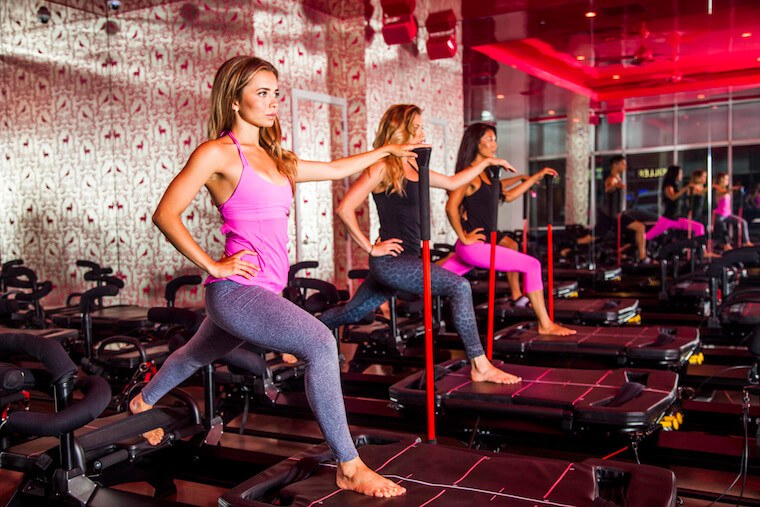
It’s not Pilates
If you look at the Megaformer, you’d be forgiven for thinking, like I did, that it’s essentially the same as a Pilates Reformer. Sure, the two pieces of equipment share some similarities—both have a carriage that slides back and forth along two rails, attached to a row of springs for resistance—but Lagree is quick to point out that they are very different workouts.
“It’s not that I don’t like the association with the Reformer, because it’s a good machine,” he says. “But when people do the Megaformer workout they sweat, they shake, they burn fat, they build muscle—you’re not gonna get that with Pilates.” (In other words, unlike Reformer classes, this is definitely not a shower-free, lunch-hour workout).
Part of this is due to the type of exercises performed on a Megaformer, all of which emphasize cardio, strength, balance, and flexibility at once. “We do a lot more standing, crawling, and planking positions than you would do on a Reformer,” explains Lagree, who worked as a personal trainer for years before creating the machine. “We bring the audience back to what they’re familiar with—like lunges and push-ups and planks.” (Except the names of Lagree moves are way cuter—think "bear," "mermaid," and "sexy back.")
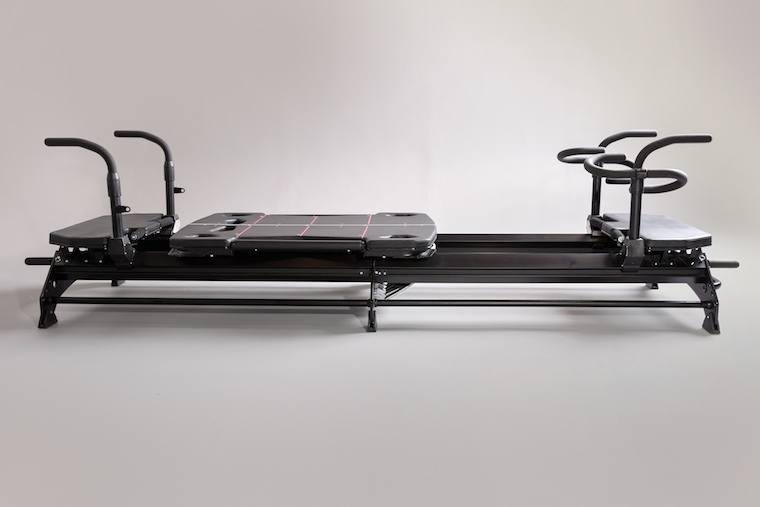
Plus, there’s the fact that the Megaformer itself has many subtle design details that set it apart from the Reformer. “There are lots of cutouts and handles integrated into the carriage and platform, so you can make very quick adjustments and find the right amount of tension and traction,” Lagree says. This allows you to contort your body into an endless number of positions, meaning you work your muscles in ways that aren’t possible on a Reformer.
And unlike the Reformer, which hasn't changed much in decades, the Megaformer is constantly evolving—there have been five iterations of the machine since it first launched in 2010, each version allowing for more accessibility and a greater variety of moves.
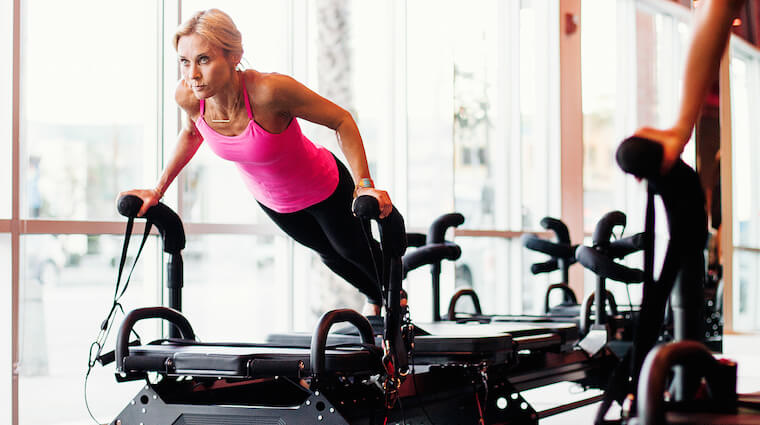
The addiction is real
Lagree never really marketed the Megaformer because he didn’t have to. Once people tried the machine for themselves, they spread the word for him. Some of those people were celebrities, like Kim Kardashian and Michelle Obama. And other students—like Cheri Byrd of Chicago’s CHI50, Amanda Freeman of New York’s SLT, and Lisa Hirsch of LA’s The Studio (MDR)—went on to open Megaformer studios of their own.
“The Megaformer was the first workout that humbled me,” says Byrd. “The first time I tried it, I was just shocked—even when you try to take a pause, you’re still working all these different muscles.” (The spring-loaded, momentum-free resistance system is to thank for that.)
She adds that it’s one of the only workouts that truly appeals to everyone, from frequent exercisers—since you can never really plateau on the Megaformer—to older folks and those with injuries, because it’s zero-impact. “I have a lot of clients that [have been injured] doing CrossFit and other high-intensity programs, and they know they can still get that intensity fix on the Megaformer. But they can do it consistently and not have to worry about breaking their body down.”
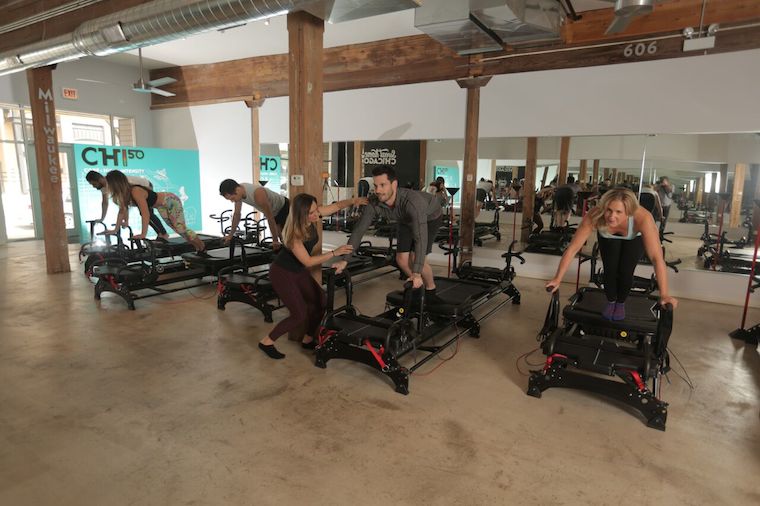
Of course, it hasn’t always been so buzzy. Freeman recalls that when she first brought the Megaformer to New York in 2011, she had a hard time even finding instructors to teach at SLT. “It was an unknown workout and we were competing for talent with popular brands,” she says. “The instructors who signed on for our first training were taking a risk: They might not even like the workout. They might not be good at teaching it. The studio may fail.”
Now, Megaformer teaching positions are highly coveted. Lagree says he’s certified over 10,000 instructors over the last decade—which is a good thing, since the demand for classes is growing, too.
“Awareness has evolved tremendously," says Freeman. "I'd say a majority of fit people in the New York area have heard of SLT or the Megaformer at this point.” Hirsch says the same is true in Los Angeles: “We have at least 700 brand-new people walking through the doors [of our three studios] each month, and many of them now say that they have taken a Lagree class before, heard of us from a friend, or have been on a Megaformer. That was not the case five years ago.”
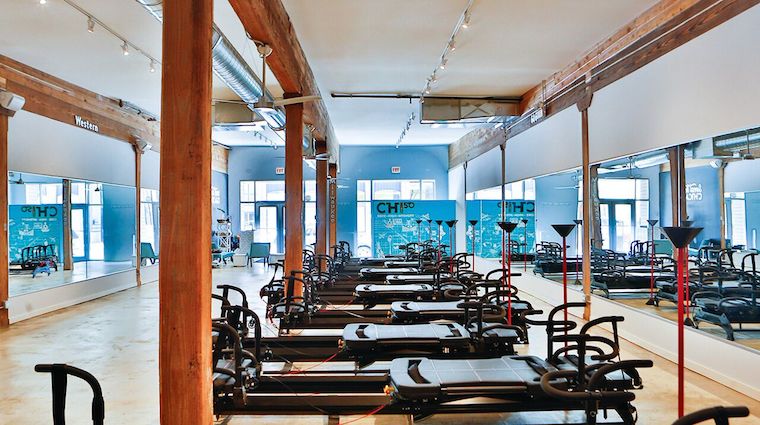
The future of the Megaformer is digital
Lagree is already prototyping the next generation of the Megaformer, which he says is about to get a whole lot more high-tech.
“In the future, there will be a larger integration of electronics on the Megaformer,” he says. “You’ll be able to see things like your heart rate, whether the muscles you’re working are balanced, and the velocity of the carriage.” Eventually, he adds, you’ll be able to log into your machine and keep track of your workouts, so that the Megaformer can adapt each workout to keep you progressing—almost taking on the role of personal trainer.
While this might sound like the Megaformer is moving into Supraformer territory (AKA Lagree's newest creation, which debuted this year in LA and automatically inclines and tilts from side to side), its creator insists that the two pieces of equipment have their own, distinct places in the future of fitness.
“I think you’ll see a coexistence of the two—a hundred years from now, some people will still swear by the Mega,” he predicts. “It’s kind of like the iPhone. I don’t foresee an end to its evolution.”
Temperatures may be dropping, but your workout routine is heating up! Check out our Fall Fitness Preview, your guide to having your healthiest fall yet. And make sure to mark your calendars: Well+Good's annual Fitness Biathlon in NYC is back this October 22.
Loading More Posts...